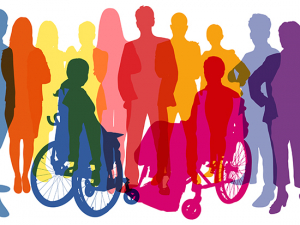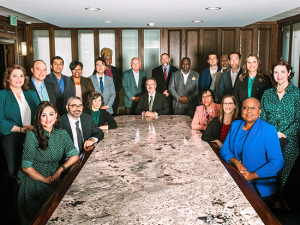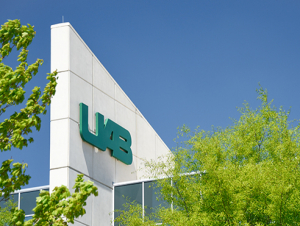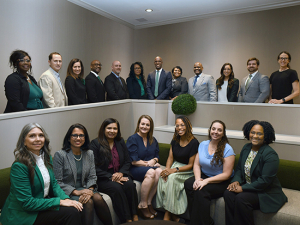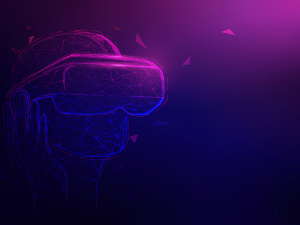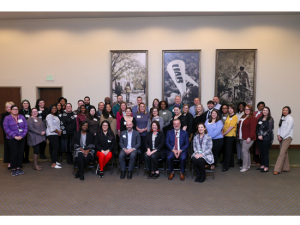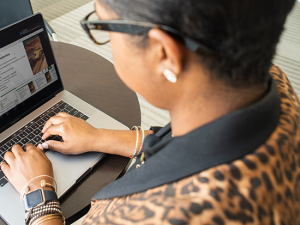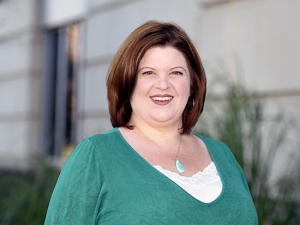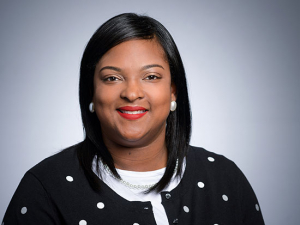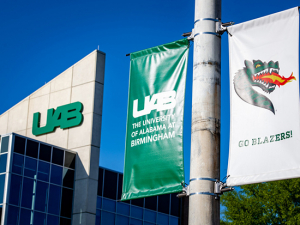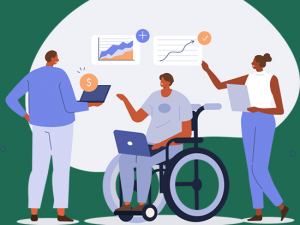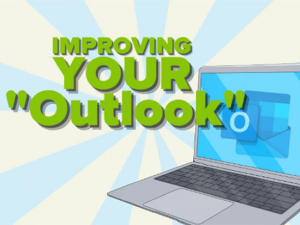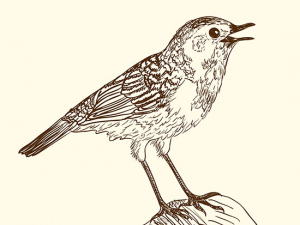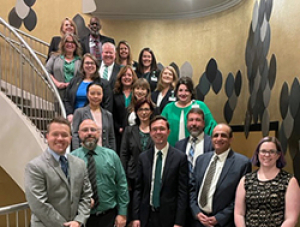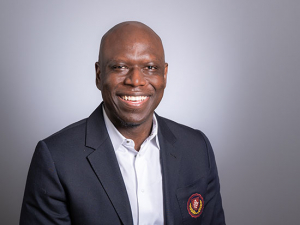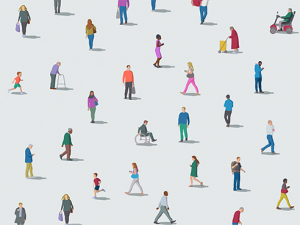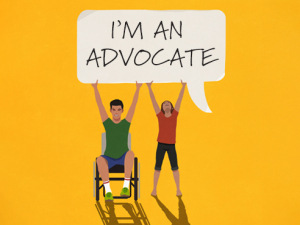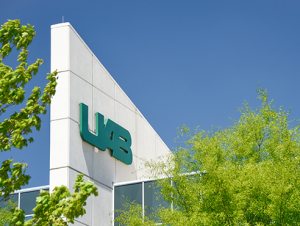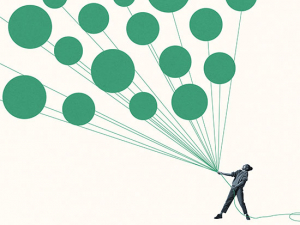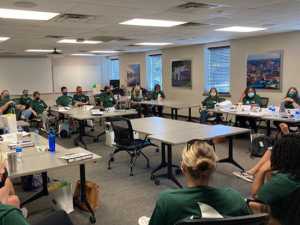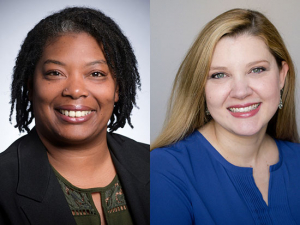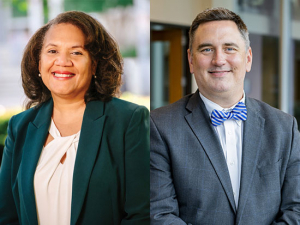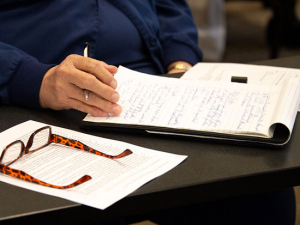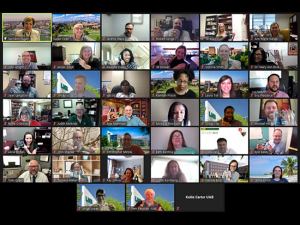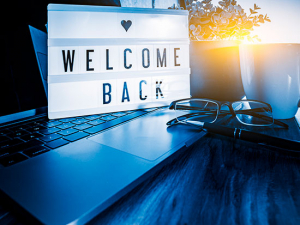 Sign language interpreters are one way to make meetings or courses accessible to those with hearing impairments. UAB's AWARE Program and Disability Support Services can schedule interpreters or captionists for employees and students with demonstrated needs.Few among us are immune to the very 2020 affliction known as Zoom fatigue. UAB, like institutions around the world, has seen use of Zoom and Microsoft Teams for video conferencing skyrocket in response to the COVID-19 pandemic. Video meetings are now a daily occurrence for most employees and students, whether they are on campus or working remotely.
Sign language interpreters are one way to make meetings or courses accessible to those with hearing impairments. UAB's AWARE Program and Disability Support Services can schedule interpreters or captionists for employees and students with demonstrated needs.Few among us are immune to the very 2020 affliction known as Zoom fatigue. UAB, like institutions around the world, has seen use of Zoom and Microsoft Teams for video conferencing skyrocket in response to the COVID-19 pandemic. Video meetings are now a daily occurrence for most employees and students, whether they are on campus or working remotely.
But communicating by video can pose particular challenges for employees and students with hearing or visual impairments. And the strategies that people may have used to overcome these impairments in the office or classroom often do not translate into the online realm. This has resulted in an increase in requests for accommodations through Disability Support Services, which coordinates accommodations for students, and through the AWARE Program, which does the same for employees.
For instance, "we have seen an increase in requests for accommodations from students with milder hearing impairments who are requesting captioning," said Valerie DuBose, associate director of Disability Support Services. "In a traditional classroom setting, these students may have been able to use technology such as FM devices to amplify volume. But those devices do not work online." As of late October, 46 students who are deaf or hard of hearing and 18 students who are blind or have low vision are receiving accommodations through Disability Support Services.
"As a result of the shift to video-based meetings and universal masking, AWARE has noticed an uptick in requests for accommodations and assistance from employees who are deaf or hard of hearing," said AWARE Coordinator Sherri Moultrie. "We have also received inquiries from departments as well."
AWARE and DSS coordinate accommodations for those with demonstrated needs. This includes scheduling sign language interpreters or captionists (known as Communication Access Real-Time, or CART providers) for meetings and classes. For those with visual impairments, DSS also has access to audio description services, which narrate the visual information present in a video on an accompanying audio track.
 UAB's town halls for employees and students feature a sign language interpreter (second row, second from right) and live captioning.
UAB's town halls for employees and students feature a sign language interpreter (second row, second from right) and live captioning.
Leading an online meeting/event?
It is important to understand that diversity and inclusion are part of UAB's Shared Values, summed up in the statement "everybody counts every day." Supervisors, faculty and others hosting Zoom meetings should be aware that impairments that are manageable in person may be worse online.
"I would suggest that supervisors check in with their staff periodically to assess how virtual meetings are going and whether there are opportunities for adjustments or improvements," Moultrie said.
Internet connectivity issues may make presentations difficult to read, particularly for those with visual impairments. These individuals may have adapted in an in-person environment by sitting closer to a projector screen or relying on paper printouts.
Poor Internet connections also interfere with audio quality, which can leave people with hearing impairments struggling to follow discussions. (This is in addition to the perennial videoconference problems of people speaking over each other, or placing themselves too far away from their computer microphones for clear audio.)
Story continues below box
There are a few simple ways to make sure that your next video-based meeting is more accessible to all participants. (Many of these suggestions are drawn from a helpful page developed by the University of Melbourne.)
Sound and sight
Ask all participants to:
- Turn off notification beeps and other sounds their computer makes to cut down on background noise
- Mute their microphones when they are not speaking
- Identify where their computer’s microphone is located and sit so they are close by
- Make sure their mouths are visible and well-lit to aid comprehension
What about auto-captions?: Although Zoom is the most commonly used videoconferencing platform at UAB, employees also have free access to the similar Microsoft Teams platform for internal meetings. Teams has an auto-captioning feature built-in. But "when we talk with faculty and staff we note that you have to be careful with any kind of automated captioning," said Allison Solomon, director of Disability Support Services. "The quality and accuracy is something you have to be mindful of."
Meeting materials
If feasible, circulate copies of presentations or memos for discussion prior to the meeting. This will make it easier for people with vision and hearing difficulties to follow along.
Use chat
The chat function in Zoom or Microsoft Teams can capture questions and answers in a format that is easier to follow than spoken exchanges.
Post-meeting follow-up
Summarize meeting outcomes, decisions and assignments in a short post-meeting email to all attendees to ensure that everyone understands what is expected.
What to do next
The steps above may not be sufficient to allow meeting attendees with hearing or vision difficulties to participate fully.
What if you as a meeting organizer or supervisor are concerned that someone may be having difficulty?
Say this: "Is there anything you need to be able to participate in this meeting effectively?"
Don’t say this: "Does anyone here have a disability?" According to the Americans with Disabilities Act (ADA), Title II (the section applicable to state and local government entities), "that is not something you can ask of employees or of students," said Solomon, who serves as UAB’s ADA/504 compliance officer. (“504” refers to Section 504 of the Rehabilitation Act of 1973, which “requires agencies to provide individuals with disabilities an equal opportunity to participate in their programs and benefit from their services, including the provision of information to employees and members of the public,” according to the Department of Health and Human Services.)
AWARE and Disability Support Services are both available for consultation by supervisors, faculty or others who would like to ensure they are following best practices. Email or call AWARE at hraware@uab.edu or (205) 975-9973. Contact Disability Support Services at dss@uab.edu or (205) 934-4205.
 Accommodations request forms for employees from the AWARE Program (left) and for students from Disability Support Services (right).
Accommodations request forms for employees from the AWARE Program (left) and for students from Disability Support Services (right).
Requesting accommodations: What you need to know
“If you are asking for any disability accommodations, you must follow the process the institution has identified,” Solomon explained. At UAB, that means employees work with the AWARE program and students work with DSS. This does not mean that employees or students must share a diagnosis or details of a condition with their supervisors or instructors, however. "An instructor will receive an accommodation letter" explaining the accommodations approved for that student, for example, Solomon said.
"When an employee is experiencing difficulties with video meetings or has another disability for which they need assistance in the workplace, the AWARE Program is available to work with the employee to gain an understanding of their duties and responsibilities, specific limitations and workplace needs in order to provide a level of individualized services," Moultrie said. "I would encourage an employee in this situation to connect with the AWARE Program and/or their supervisor regarding the difficulty they are encountering. There are many options that are available and we can identify what would be appropriate for their particular needs."
Story continues below box
Send a message of inclusion
"One of the things we recommend to people organizing events is adding a simple statement to their flyers and other promotional materials that states, 'For disability accommodations, please contact...' and you can put the name of a person in your group or ask them to contact DSS," Solomon said. "That sends a message that the organizers of the event know that people with disabilities may be interested in the event and they want to ensure an accessible experience. That's always a good message to send."
